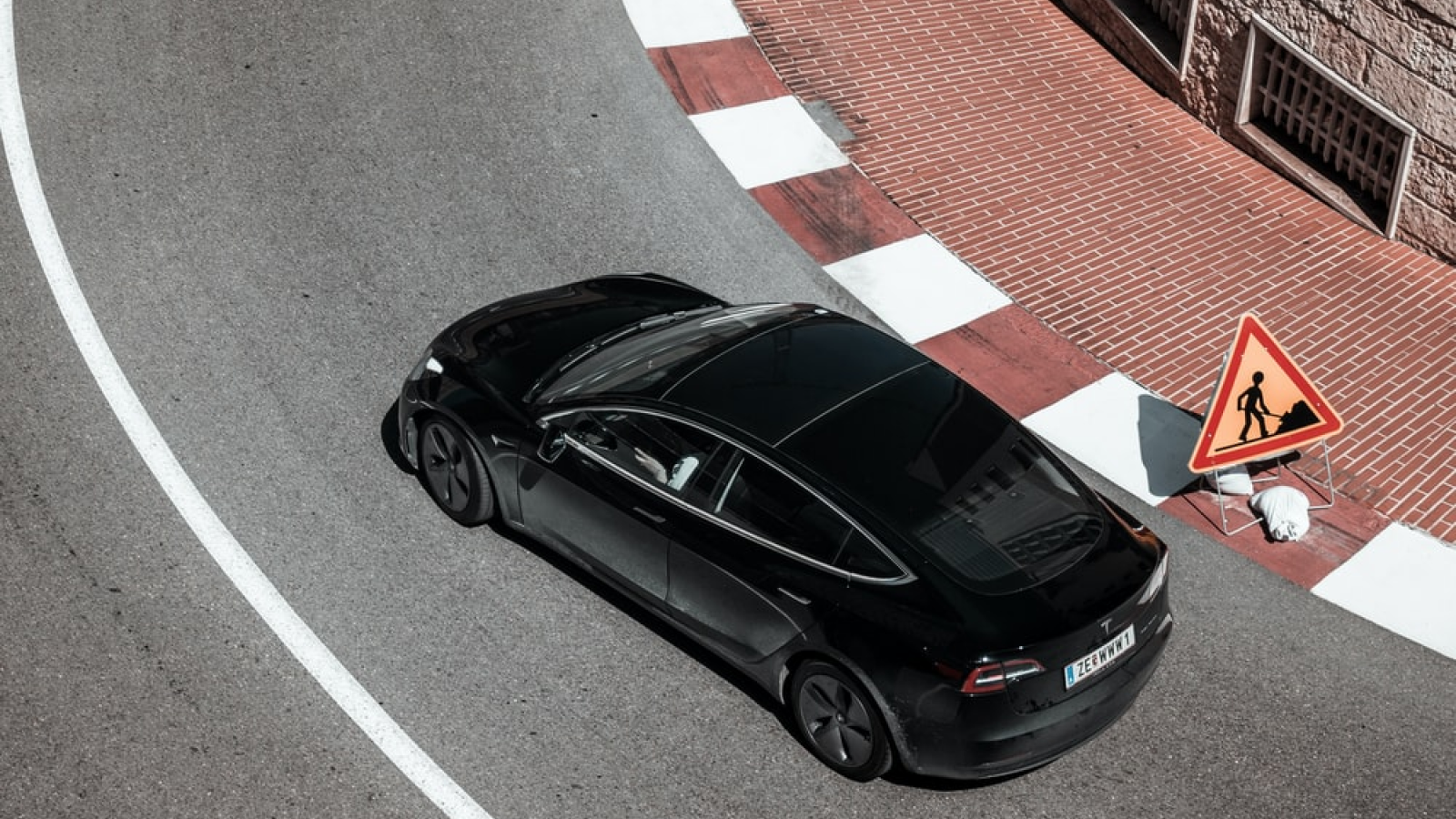Since the shareholders’ meeting on June 5th, Tesla’s stock performance has been excellent, which directly led Tesla CEO Elon Musk to show off on Twitter. Today, we are not talking about the new Roadster that can fly without 10 rocket boosters, but the upcoming 9.0 cross-version update of Tesla Autopilot.
Elon’s Remarks
As I have written before, since the end of 2015, Elon announced that AP has a highly prioritized business, and he himself began to interview and lead the AP team directly. Therefore, his opinion is crucial for the upcoming 9.0 cross-version update.
Of course, it is also because he expressed too much, to the point where I want to remember this quote and verify it after the 9.0 update is released.
At the Q1 earnings conference, Elon’s evaluation of the AP team in the AI field was as follows:
I am very excited about Tesla’s progress in neural networks. I found that the AI field is exponential. You always feel that progress is slow and boring, and then suddenly, wow, that’s the feeling.
Look at what Google’s DeepMind did with AlphaGo. At first, it was not as good as a good human player, and then suddenly it defeated the European champion and then the world champion, and then it can fight and defeat anyone at the same time. Soon they developed AlphaZero, which easily crushed AlphaGo, that’s it.
This is a bit like the progress of autonomous driving. It (the current AP 2.0) is like a bad driver, and then suddenly, it is no different from a well-trained old driver, and it will evolve like this.
Next is the shareholder meeting. Elon talked more about what “very exciting progress” means.
First, he revealed that AP will push a significant update this month, and in the next few months, even more explosive updates will be pushed: “The performance and reliability of AP will show exponential growth in the next 6-12 months, and our improvements are very fast.”
Later on Twitter, Elon went further: “This issue (unable to identify complex road conditions) will be improved after the recent update is pushed, and it will be completely solved after our long-awaited 9.0 cross-version update in August. So far, the investment in AP has been focused on improving safety. After the 9.0 version update, the vehicle will begin to have (some) fully autonomous driving functions.”
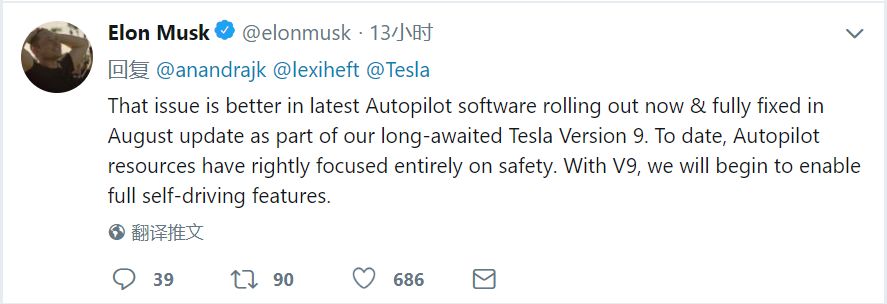
Because of the imprecise expression, domestic media reports on Tesla’s August push for fully autonomous driving features have been rampant.# Autopilot 9.0 What’s new?
As industry insiders know, autonomous driving won’t happen that fast, even Elon himself said at the Q1 earnings call that fully autonomous driving will take another two years.
The new version of Autopilot 9.0, which was boasted at the shareholders’ meeting, has been pushed to Tesla owners worldwide. We randomly selected feedback from two Tesla owners on Weibo:


It can be seen that everyone does not agree with Elon’s statement that “improvement is very rapid,” but overall, they have a positive attitude towards the AP under 2.0 hardware catching up with the first generation of AP.
What’s new in this update?
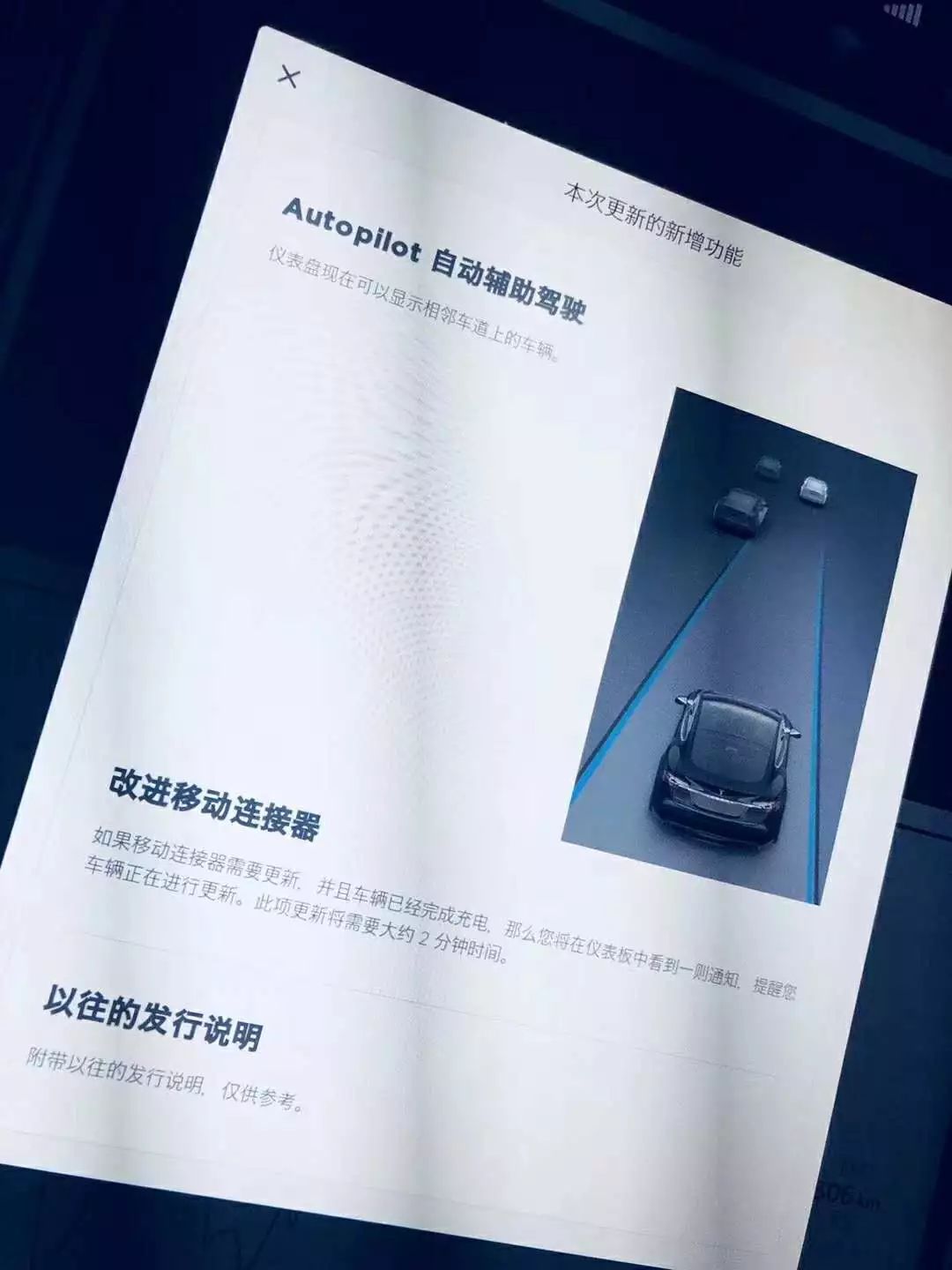
In fact, the official update notes only mention that “the instrument panel can display vehicles in adjacent lanes.” Specifically, it looks like this:
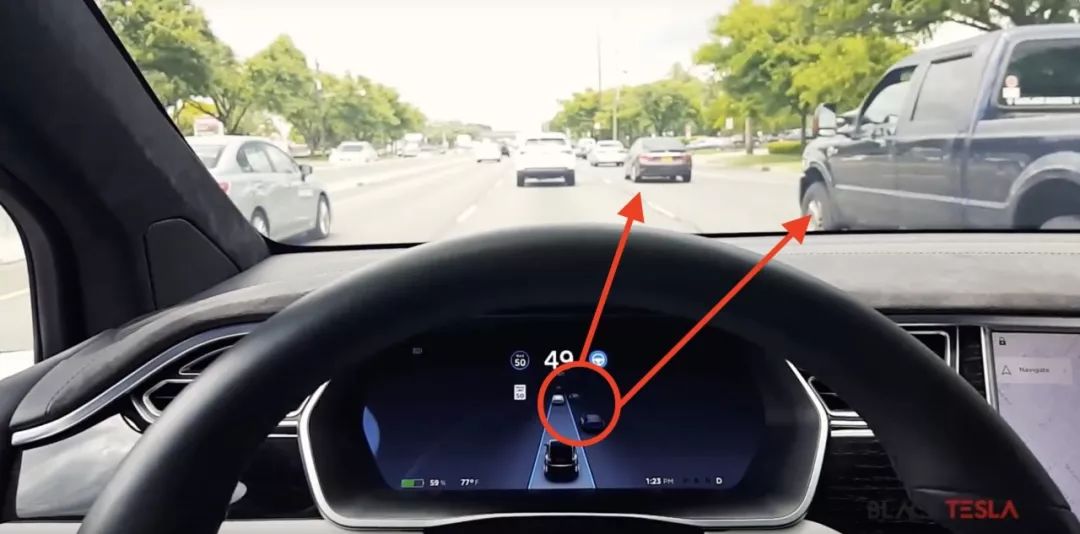
However, some media have reported that two important features in AP, Autosteer and TACC, have been greatly improved after the update.
There is also an update detail that is not mentioned in the official explanation, but I think it is very timely and necessary.
When the vehicle is in Autopilot mode, if the driver removes both hands from the steering wheel for 15-20 seconds, the vehicle will sound an alarm to remind the driver to hold the steering wheel and pay attention to the road ahead.
From the earliest completely uninvolved to the later alarm after not holding the steering wheel for 3 minutes, to today’s alarm after leaving it for 15-20 seconds, Tesla has gradually tightened its control over AP and trust in the driver.
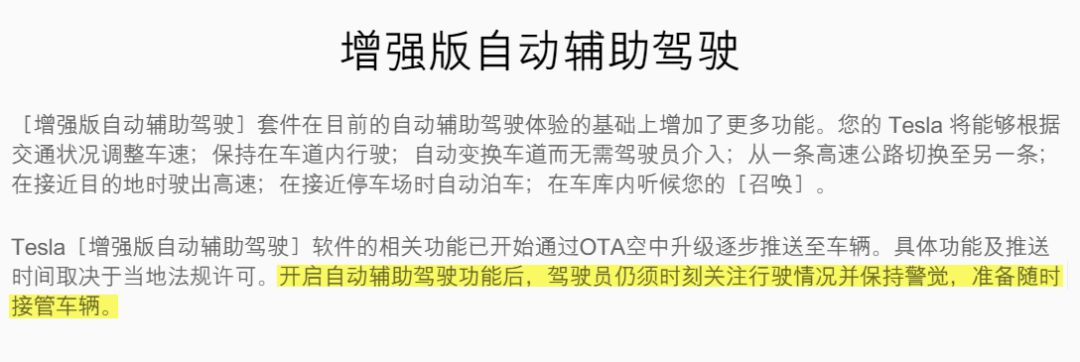 Although Tesla has been emphasizing since the release of AP 2.0 that “even with the Autopilot on, the driver must always pay attention to the driving situation and remain vigilant, ready to take over the vehicle.” This sentence appears on the official website and during the first launch of AP, but many people will relax their vigilance under the smooth driving experience of AP.
Although Tesla has been emphasizing since the release of AP 2.0 that “even with the Autopilot on, the driver must always pay attention to the driving situation and remain vigilant, ready to take over the vehicle.” This sentence appears on the official website and during the first launch of AP, but many people will relax their vigilance under the smooth driving experience of AP.
If the system allows the driver to not hold the steering wheel for up to 3 minutes, many sudden unexpected road conditions will occur and the driver will not be able to react in time, let alone the system completely ignoring it. The global first crash of AP in May 2016 occurred while the system did not intervene at all and the driver was asleep.
Why doesn’t Tesla just push a warning every 15-20 seconds to remind the driver to keep their hands on the wheel?
The reason is simple, AP can handle some very simple road conditions, in which case the driver needs to briefly release the steering wheel. Frequent alarms will severely affect the user experience.
Some users have complained on Twitter that the new version is definitely a regression of AP because the frequent alarms of the system are too noisy, and they will never use AP again.
Even Iron Man is struggling with this issue:
Hey, this is the problem: you can’t make the system too sensitive to the point where people don’t want to use it, which has a negative impact on safety (data from the US National Highway Traffic Safety Administration shows that the accident rate during AP use is reduced by 40%); but also, you can’t make people trust the system too much, which also leads to safety issues.
The overall performance should be better after the latest update.
In summary, Tesla has handed over the judgment right of whether to leave the steering wheel to the user. After accidents caused by excessive trust in AP, Tesla has tightened control to avoid more tragedies at the expense of reducing the user experience.
That’s all for this update. Now, let’s talk about what new features the 9.0 update will bring.
In fact, there is not much new: Open Tesla’s official website, it’s all written here:
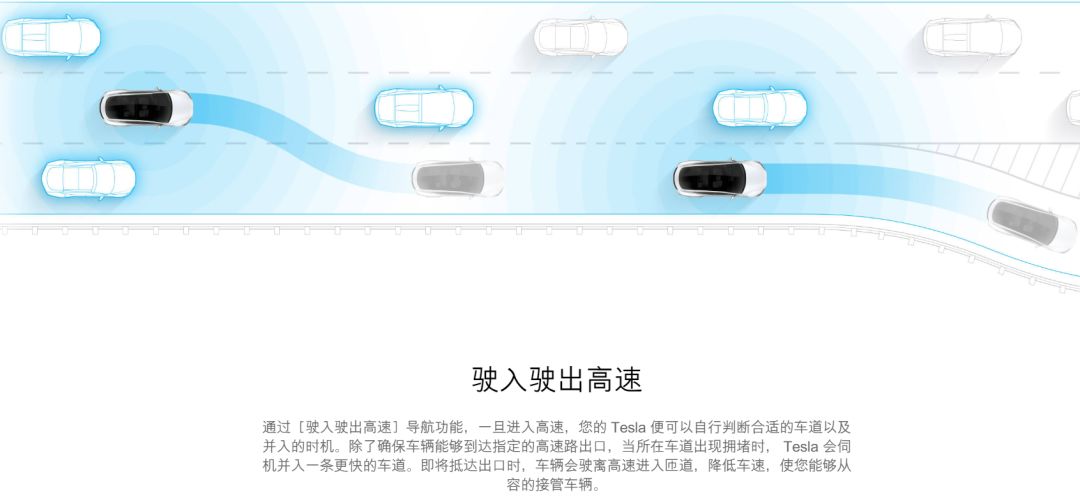
Navigate on Autopilot:
Our newest Autopilot convenience feature, designed to get you to your destination more efficiently by guiding your car on and off the highway. Navigate on Autopilot suggests the most efficient route to your destination, navigating urban streets, and highways. Enhanced Summon is also included.
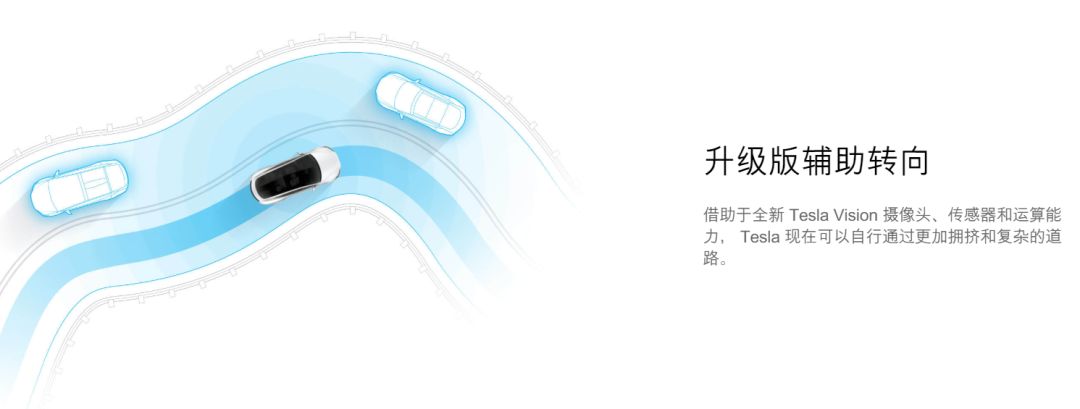 Upgraded Autopilot:
Upgraded Autopilot:
With the help of the brand-new Tesla Vision cameras, sensors and processing power, Tesla is now able to navigate through more congested and complex roads by itself. (Perhaps it could be true autonomous lane changing without the need to use turn signals anymore?)
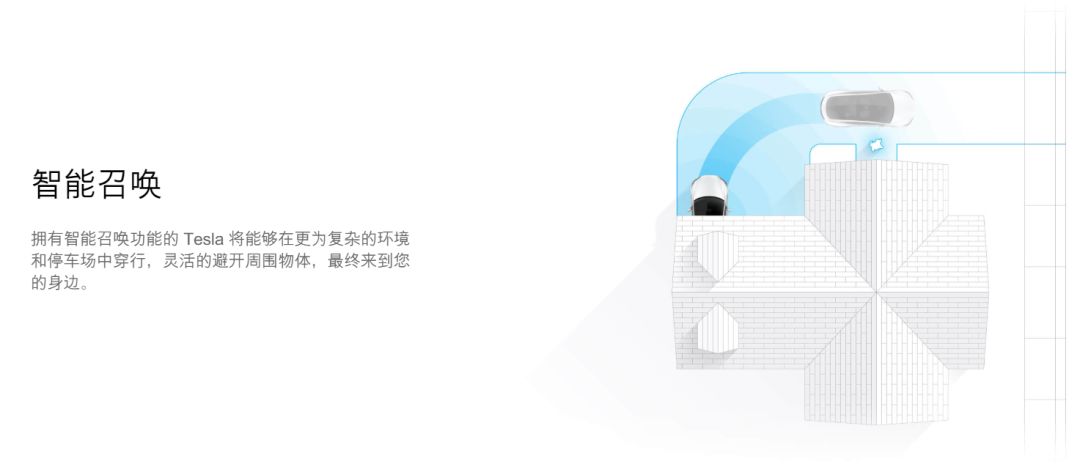
Smart Summon:
With Smart Summon, Tesla vehicles with the function will be able to navigate through more complex environments and parking lots, flexibly avoiding surrounding objects, ultimately coming to your side.
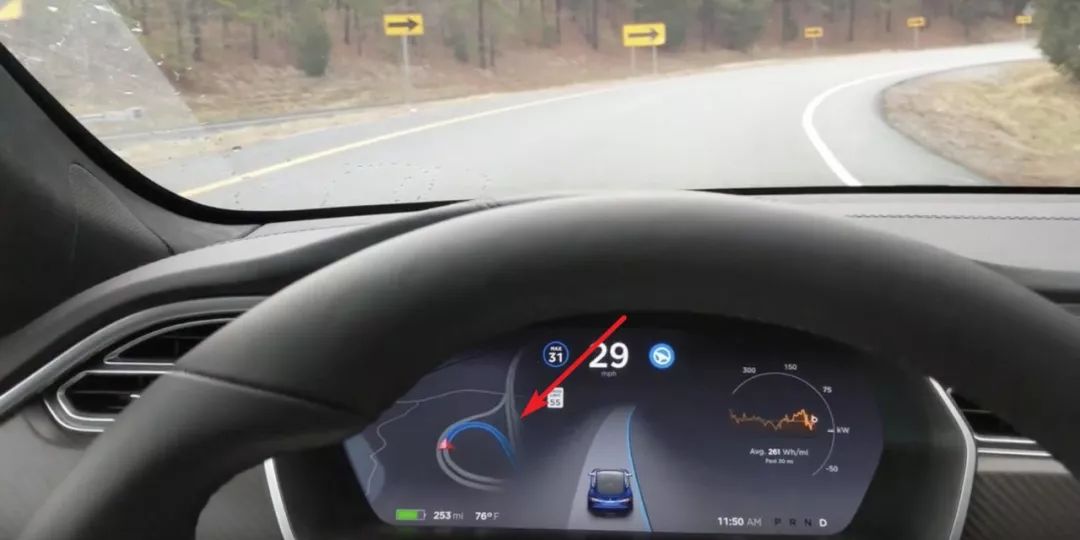
A foreign Tesla owner tested the turning ability of the Autopilot after the system was updated, and it showed significant improvements when making a 180° turn compared to the previous version. This scenario is almost a must-have for entering and exiting highways. Therefore, Tesla may have made targeted optimizations and improvements to the above three functions.
If you imagine a scenario that combines the above three functions, what would it be?
After several delays, the demonstration of full autonomous driving technology spanning 4,500 km across the United States without human intervention, originally scheduled for the end of 2017, will take place at the end of this year. Therefore, after the release of the 9.0 Beta version in August containing the above three functions, version 9.1 will be released 2-3 months later for comprehensive improvements (versions 7.1 and 8.1 are full fixes and improvements for cross-version updates). The next step is the grand act of crossing America.
After a year of delay, this demonstration will finally happen. Elon Musk previously stated that Tesla had the capability to demonstrate the technology on a specific 4,500 km route earlier this year, but abandoned the idea due to limited overall system improvements. The Autopilot team is committed to promoting the overall development of more universal and general technology.
Does this mean that by the end of this year, all Tesla owners can autonomously drive from California to New York via any high-speed route, regardless of the official Tesla-planned route?
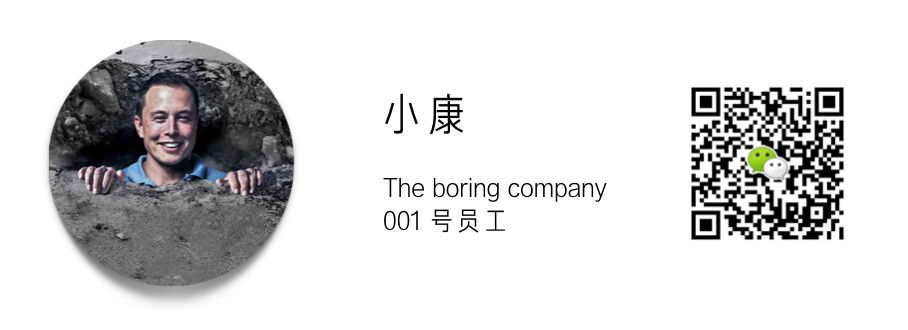


This article is a translation by ChatGPT of a Chinese report from 42HOW. If you have any questions about it, please email bd@42how.com.
